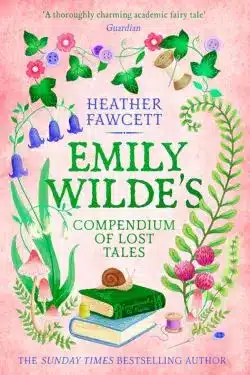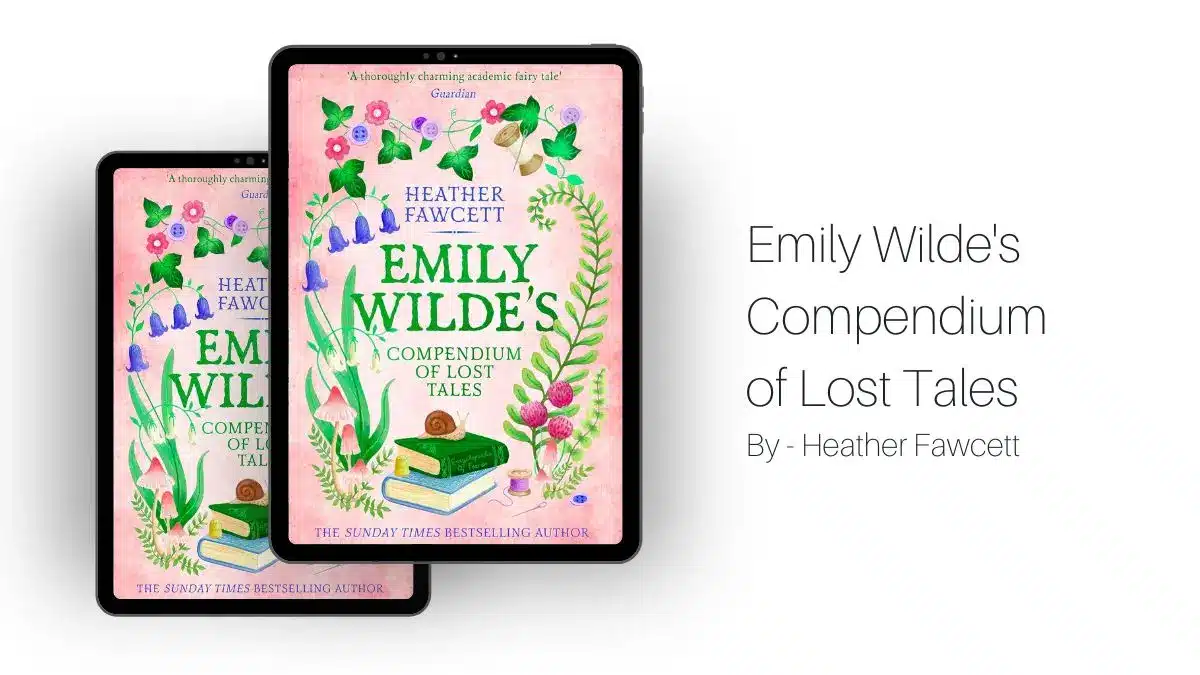Heather Fawcett’s “Emily Wilde’s Compendium of Lost Tales” serves as the third and final installment in the beloved Emily Wilde series. This novel continues the journey of the endearing dryadologist, Emily Wilde, and her enigmatic companion, Wendell Bambleby, as they navigate the intricate and perilous world of Faerie. Fawcett masterfully intertwines elements of folklore, romance, and adventure, delivering a narrative that is both heartwarming and intellectually stimulating.
Plot Overview
The story picks up immediately after the events of “Emily Wilde’s Map of the Otherlands.” Emily and Wendell have returned to his ancestral faerie kingdom, where Wendell is poised to reclaim his rightful throne following the mysterious disappearance of his malevolent stepmother, Queen Arna. Upon their arrival, they are confronted with a land in turmoil; the once-vibrant forests are withering, and a pervasive malaise threatens the very fabric of the realm. It becomes evident that Queen Arna has cast a devastating curse, endangering both the kingdom and its inhabitants.
Emily, ever the diligent scholar, immerses herself in the rich tapestry of faerie lore, seeking ancient tales and forgotten myths that might hold the key to breaking the curse. Her journey is not merely an academic pursuit but a deeply personal quest to save the land she has come to cherish and the man she loves. As Emily delves deeper into the mysteries of Faerie, she uncovers secrets that challenge her perceptions and test her resolve.

Character Development
Emily Wilde: Throughout the series, Emily has been portrayed as a brilliant yet socially awkward academic, more comfortable with her books than with people. In this installment, her character undergoes significant growth. Faced with the responsibilities of queenship in an unfamiliar and often hostile realm, Emily grapples with self-doubt and the weight of expectation. Her evolution is evident as she transitions from a passive observer to an active participant, making decisions that impact the fate of an entire kingdom. This transformation is both believable and inspiring, showcasing Fawcett’s skill in character development.
Wendell Bambleby: Wendell’s character is further explored, revealing layers beneath his charming and carefree exterior. As he assumes the mantle of king, he confronts the challenges of leadership and the shadows of his past. His relationship with Emily deepens, marked by moments of tenderness, tension, and mutual respect. Their dynamic is a testament to Fawcett’s ability to craft nuanced and compelling relationships.
Themes and Motifs
The Power of Stories: A central theme in the novel is the significance of stories and folklore. Emily’s reliance on ancient tales to navigate present challenges underscores the idea that history and myth are invaluable guides. This motif is woven seamlessly into the narrative, highlighting the timeless relevance of storytelling.
Identity and Belonging: Both Emily and Wendell struggle with their identities and roles within the faerie realm. Emily, a human scholar, questions her place as queen, while Wendell confronts the legacy of his lineage. Their journeys reflect broader questions about belonging and self-acceptance.
Love and Sacrifice: The novel explores the complexities of love, particularly the sacrifices it demands. Emily and Wendell’s relationship is tested by external threats and internal uncertainties, illustrating that love is as much about compromise and understanding as it is about passion.
World-Building and Atmosphere
Fawcett’s world-building is nothing short of enchanting. The faerie realm is depicted with vivid detail, from its ethereal landscapes to its enigmatic inhabitants. The author’s background in archaeology and English literature shines through, as she infuses the setting with a sense of history and depth. The atmosphere is both whimsical and foreboding, capturing the duality of Faerie as a place of wonder and danger.
Pacing and Structure
The narrative is structured through Emily’s journal entries, a format that offers intimate insight into her thoughts and experiences. While some readers have noted a slower pacing in the initial chapters, this deliberate tempo allows for a deep immersion into the world and its complexities. As the plot progresses, the tension escalates, culminating in a series of climactic events that are both satisfying and thought-provoking.
Reception and Critique
“Emily Wilde’s Compendium of Lost Tales” has garnered acclaim for its rich storytelling and character development. Reviewers have praised Fawcett’s ability to blend academic intrigue with fantasy elements, creating a narrative that appeals to both scholars and casual readers. The New York Times highlighted Emily as “delightful, brilliant but flawed, and often darkly funny,” noting the “light but surprisingly impactful” romance.
However, some critiques have emerged regarding the novel’s pacing and resolution. A reviewer from The BiblioSanctum observed that the story “gets off to a relatively slow start,” with the first half feeling as though “barely anything happens.”This sentiment is echoed by readers on Reddit, with one commenting that the book “felt rushed somehow and incomplete,” and another noting that it “doesn’t seem scary or high stakes.”
Despite these critiques, the consensus remains that the novel provides a fitting and heartfelt conclusion to the trilogy. The character arcs are resolved in a manner that is both authentic and satisfying, leaving readers with a sense of closure.
Conclusion
Through meticulous world-building, complex character development, and the seamless integration of themes such as the power of storytelling and the quest for identity, Fawcett delivers a conclusion that resonates on multiple levels. While the pacing may present challenges for some readers, the overall experience is one of immersion into a world where magic and academia coexist harmoniously. Emily Wilde’s Compendium of Lost Tales, and the series as a whole, is a must-read for those who appreciate fantasy enriched with intellect and heart.
Also Read: Rebel Witch: By Kristen Ciccarelli (Book Review)



